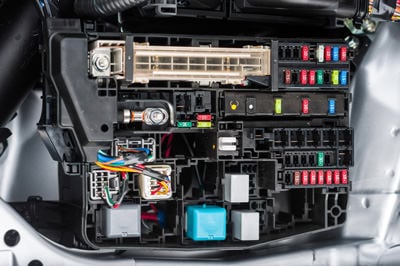Specialized regulatory compliance assistance guidance for peace of mind.
Wiki Article
Leading Tips for Effective Electric System Troubleshooting
Repairing electrical systems calls for a methodical strategy, grounded in a thorough understanding of electrical principles and safety and security protocols. By acquainting oneself with circuit elements, utilizing necessary tools, and adhering to a structured evaluation approach, professionals can properly determine and resolve problems. The nuances of efficient repairing extend beyond plain technological knowledge; comprehending how to document searchings for and focus on safety can considerably affect end results. As we check out these vital components even more, it ends up being clear that understanding this process is not just helpful however crucial for success in the field.Understand the Basics
Understanding the fundamentals of electric systems is necessary for reliable troubleshooting, as a strong structure allows professionals to diagnose and fix problems much more effectively. A comprehensive understanding of electrical concepts, such as voltage, current, resistance, and power, is essential in recognizing the source of issues. Voltage is the electric potential difference that drives present with a circuit, while resistance opposes the flow of existing, affecting the general performance of the system.Familiarity with circuit components, consisting of resistors, capacitors, diodes, and changes, is likewise extremely important. Each part plays an unique role in circuit actions and can affect efficiency when malfunctioning. Additionally, recognizing series and parallel circuit arrangements is important, as these setups influence the circulation of voltage and existing within the system.
Service technicians have to be aware of potential risks, such as shock and short circuits, to carry out secure troubleshooting practices. By grasping these foundational principles, professionals boost their capacity to perform effective diagnostics and repair work, eventually leading to enhanced performance and dependability of electrical systems (electrical system troubleshooting).
Gather Necessary Equipment
Efficient troubleshooting of electric systems calls for the appropriate collection of devices to identify and settle concerns precisely. A well-appointed professional can significantly enhance performance and performance in recognizing problems. Important tools include a multimeter, which gauges voltage, existing, and resistance, permitting accurate assessments of electric parts. Secure meters are additionally useful for determining present without disconnecting the circuit, ensuring safety and convenience.In addition, protected hand devices such as screwdrivers, pliers, and cable strippers are essential for securely controling electric connections. It is additionally a good idea to have a circuit tester available to verify the existence of voltage in outlets and cables. For more complicated systems, a thermal imaging cam can help discover overheating parts, indicating prospective failures.

Adhere To an Organized Method
Having actually gathered the suitable devices, the following action in fixing electric systems is to follow a systematic strategy. A methodical strategy ensures that technicians can recognize faults successfully and properly, decreasing downtime and preventing unnecessary repairs.Begin by examining the system's schematic layouts and specifications. This entails monitoring each element methodically, beginning from the power source and working in the direction of the lots.
Use testing tools, such as pop over to this site multimeters and oscilloscopes, to gather unbiased information regarding voltage, current, and resistance at numerous points within the system. This empirical evidence will lead your troubleshooting initiatives and help to validate or get rid of potential reasons of failure.
In addition, take into consideration ecological elements that may affect the system's efficiency, such as temperature level variations or moisture ingress. A detailed assessment of circuitry, connections, and components will certainly make sure that all opportunities are accounted for.
File Your Findings
Complete documents is necessary in the fixing process of electrical systems. This practice not only aids in understanding the root reason of the problem but also serves as a referral for future troubleshooting initiatives.
Additionally, keeping a log of components replaced or repair work carried out is vital. This info supports supply administration and can assist assess the long life and dependability of certain elements.
Ultimately, the documents procedure ought to be detailed yet succinct, making it possible for easy retrieval and evaluation - electrical system troubleshooting. By read the article prioritizing detailed documentation, specialists can develop a useful understanding base that not just aids in current troubleshooting yet likewise encourages future maintenance efforts, thereby enhancing total system reliability

Prioritize Safety And Security Steps
Acknowledging the fundamental threats connected with electrical systems is crucial for ensuring security throughout troubleshooting. Electric shock, burns, and equipment damages are simply a few of the prospective risks that service technicians face. Prioritizing safety and security procedures is not only a lawful obligation but additionally an ethical crucial that safeguards both the service technician and the surrounding atmosphere.Prior to commencing any troubleshooting job, technicians ought to don ideal individual protective equipment (PPE), including protected handwear covers, shatterproof glass, and flame-resistant clothing. Guaranteeing that the work area is dry and totally free of mess can dramatically reduce the risk of accidents. It is important to de-energize circuits prior to beginning any type of job, verifying that they are not live through the usage of a multimeter or voltage tester.
Establishing clear communication protocols with team participants is additionally essential; this makes certain that everybody understands prospective dangers and the condition of the electrical system being serviced. Lastly, having an emergency feedback plan in position can prove indispensable in case of an incident. By prioritizing safety and security procedures, professionals can successfully reduce risks and promote a much safer workplace.
Verdict
Effective electric system repairing relies on a thorough understanding of fundamental principles and a systematic strategy. Prioritizing safety and security measures ensures the health of individuals included and the stability of the electric system.Report this wiki page